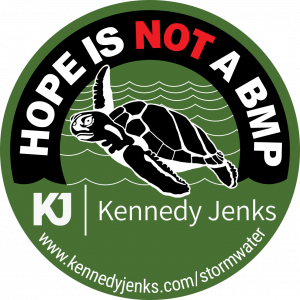The United States Environmental Protection Agency’s (EPA’s) industrial stormwater permitting requirements have come under scrutiny since the program’s inception in 1995. Concerns about the effectiveness of efforts to date resulted in a legal agreement between EPA, industry organizations, and environmental groups to review and improve certain aspects of the EPA’s Multi-Sector General Permit for industrial stormwater (MSGP). The National Academy of Sciences (NAS) recently issued a report offering guidance to inform the next revision of the MSGP, expected in 2020. Continue reading for a summary of the study’s highlights and a discussion of its potential impacts.
EPA’s MSGP
EPA’s MSGP is the governing industrial stormwater permit for facilities in areas where EPA is the permitting authority, such as Massachusetts, New Hampshire, New Mexico, American Samoa, Guam, Puerto Rico, Indian Lands, and Military facilities. The current MSGP covers over 2,000 facilities nationwide. Several other states that have been delegated authority by EPA to implement their own permits must also look to the MSGP as a guiding reference. For example, according to the California Stormwater Quality Association, the California State Water Resources Control Board relied heavily on the MSGP in developing their latest state Industrial General Permit (CASQA Water Quality Newsflash, March 2019).
NAS Study
The overall goal of the study was to “recommend ways EPA can strengthen the MSGP to provide its intended environmental protection while balancing the overall burden of monitoring on industry.” (emphasis added). The report, titled “Improving the EPA Multi-Sector General Permit for Industrial Stormwater Discharges,” is focused on three (3) major themes: improving pollutant monitoring requirements and benchmark thresholds; improving sampling and data collection; and stormwater retention to minimize pollutant loads. In the sections that follow, we share our key take-ways from each major theme.
Improving Pollutant Monitoring Requirements and Benchmark Thresholds
Changes to Benchmarks
The report recommends that EPA periodically review and update sector-specific benchmark monitoring requirements to incorporate new scientific information. New requirements would provide stronger consequences to benchmark exceedances, increasing the significance of the benchmark thresholds.
The report suggests that MSGP benchmarks be based on acute criteria; iron, arsenic, and selenium benchmarks are currently based on chronic criteria and should be revisited. The report recommends removing benchmarks for magnesium and iron. The report further recommends that EPA cease development of new numeric effluent limitations (NELs) at this time.
Extending Monitoring to Non-Industrial Facilities
The report’s authors conclude that the current system of using SIC codes to characterize a facility’s industrial activities is not effective. Instead, they state EPA should extend monitoring to non-industrial unpermitted facilities with activities similar to those currently covered under the MSGP.
Industry-Wide Monitoring
The authors recommend that EPA encourage industries to collect scientifically rigorous performance data for common stormwater control measures and make them publicly available. It further suggests industry-wide monitoring of pH, Total Suspended Solids (TSS), and Chemical Oxygen Demand (COD), which the authors consider general indicators of poor site management practices.
Improving Sampling and Data Collection
Recommended Improvements
The report recommends improved sampling design and procedures, laboratory analysis accreditation programs, improved data management and training or certificate program in stormwater collection and monitoring. The authors recommend that EPA allow and promote the use of composite sampling for benchmark monitoring for all pollutants except those affected by storage time.
Tiered Approach to Monitoring
The MSGP currently offers a sampling waiver for the remainder of the permit term after four consecutive samples are measured to be below benchmarks. The report recommends the MSGP require continued annual sampling at minimum of, with a tiered approach to monitoring for those facilities which exceed benchmarks.
Stormwater Retention to Minimize Stormwater Loads
The authors encourage the use of industrial stormwater retention with infiltration or beneficial use and recommend that EPA offer incentives to encourage industrial stormwater infiltration or capture and use. However, the report stresses that infiltrated water should meet primary drinking water standards.
Next Steps
The EPA is currently reviewing and evaluating the study recommendations in preparation for the next iteration of the MSGP, expected to be issued in 2020. If EPA implements the NAS study recommendations, industrial facilities nationwide should prepare for new and different monitoring, inspection, and training requirements under this new permitting regime. Those states and territories directly regulated by the MSGP will be the first to be subjected to these new requirements. As other delegated states and territories revise their own industrial stormwater permits, they may be required to adopt many of the changes from the revised MSGP.
KJ’s Stormwater Community of Practice staff closely track the status of the MSGP and state industrial stormwater permits on behalf of our clients. We comment on proposed revisions to these permits and help our clients plan for upcoming permit changes. We help clients obtain general and individual permit coverage when necessary and if benchmark monitoring shows a need for improvements, we can help with pollutant source assessments and operational, structural, and treatment improvements. Contact us for more information on how we can help obtain and stay in compliance with your NPDES permit.
If you are interested in more information on our stormwater services, don’t forget to subscribe to our blog! Or email us at stormwater@kennedyjenks.com.
Resources
Download the full report here.
View a webinar from NAS on the study results here.

© Kennedy/Jenks Consultants, Inc. 2020. All rights reserved. This information may not be copied, reproduced, or distributed without written permission.

